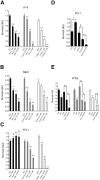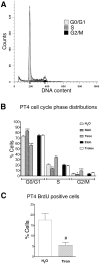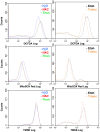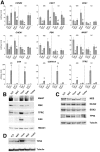NAC, tiron and trolox impair survival of cell cultures containing glioblastoma tumorigenic initiating cells by inhibition of cell cycle progression
- PMID: 24587218
- PMCID: PMC3938592
- DOI: 10.1371/journal.pone.0090085
NAC, tiron and trolox impair survival of cell cultures containing glioblastoma tumorigenic initiating cells by inhibition of cell cycle progression
Abstract
Reactive oxygen species (ROS) are metabolism by-products that may act as signaling molecules to sustain tumor growth. Antioxidants have been used to impair cancer cell survival. Our goal was to determine the mechanisms involved in the response to antioxidants of a human cell culture (PT4) containing glioblastoma (GBM) tumorigenic initiating cells (TICs). ROS production in the absence or presence of N-acetyl-L-cysteine (NAC), tiron, and trolox was evaluated by flow cytometry (FCM). The effects of these antioxidants on cell survival and apoptosis were evaluated by 3-(4,5-Dimethylthiazol-2-yl)-2,5-diphenyltetrazolium bromide assay (MTT) and FCM. The biological processes modulated by these drugs were determined by oligonucleotide microarray gene expression profiling. Our results showed that NAC, tiron and trolox impaired PT4 cell survival, had minor effects on ROS levels and caused wide deregulation of cell cycle genes. Furthermore, tiron and trolox caused inhibition of cell survival in two additional cell cultures containing TICs, FO-1 and MM1, established from a melanoma and a mesothelioma patient, respectively. NAC, instead, impaired survival of the MM1 cells but not of the FO-1 cells. However, when used in combination, NAC enhanced the inhibitory effect of PLX4032 (BRAF V600E inhibitor) and Gefitinib (EGFR inhibitor), on FO-1 and PT4 cell survival. Collectively, NAC, tiron and trolox modulated gene expression and impaired the growth of cultures containing TICs primarily by inhibiting cell cycle progression.
Conflict of interest statement
Figures






References
Publication types
MeSH terms
Substances
LinkOut - more resources
Full Text Sources
Other Literature Sources
Molecular Biology Databases
Research Materials
Miscellaneous

